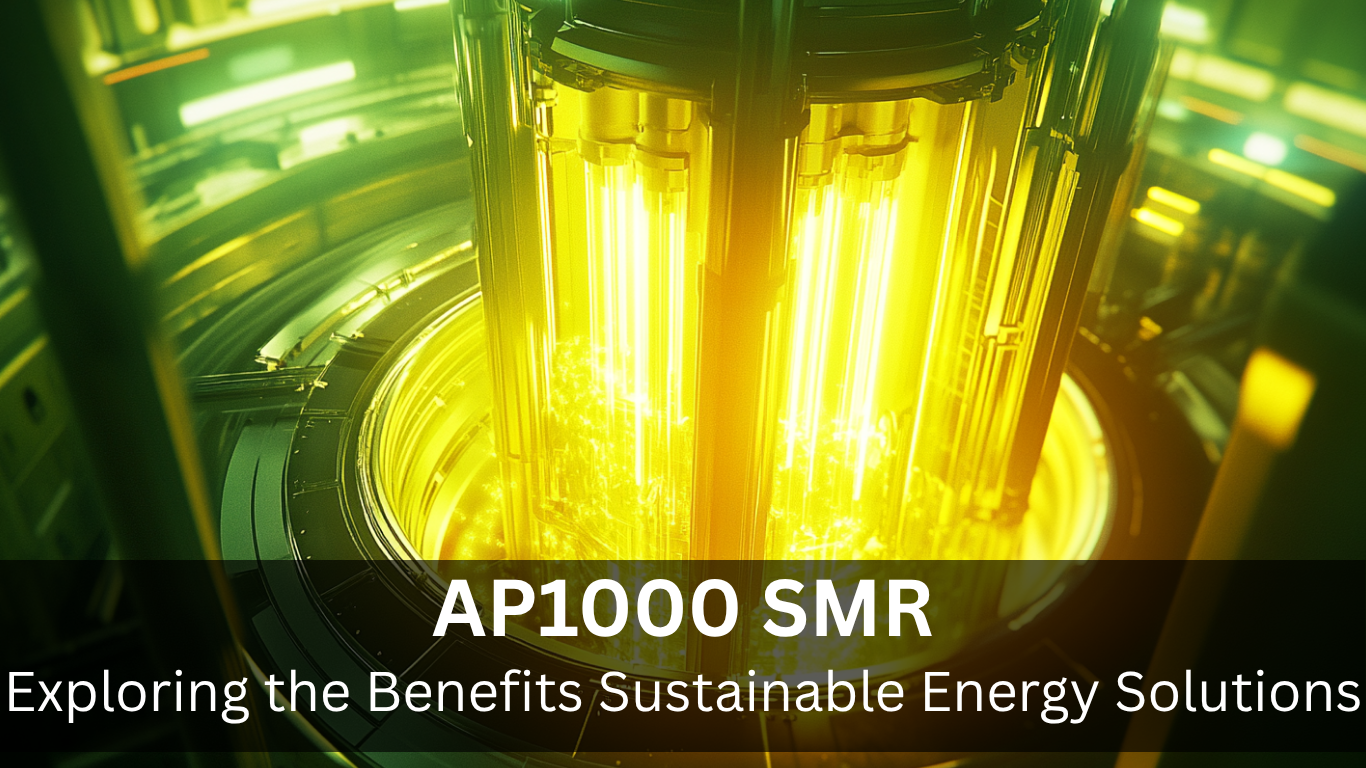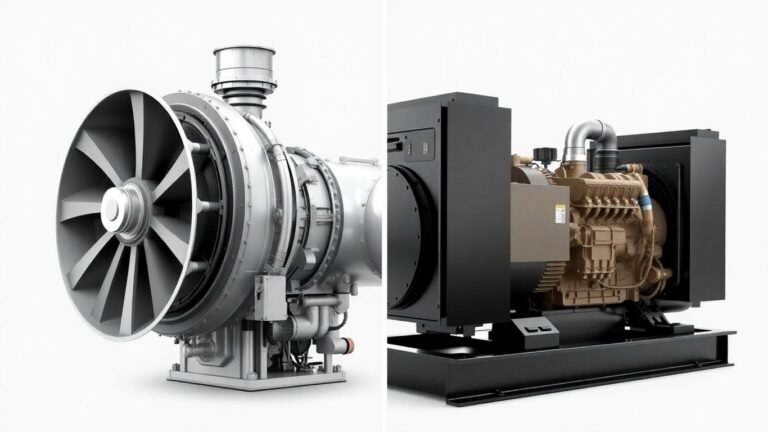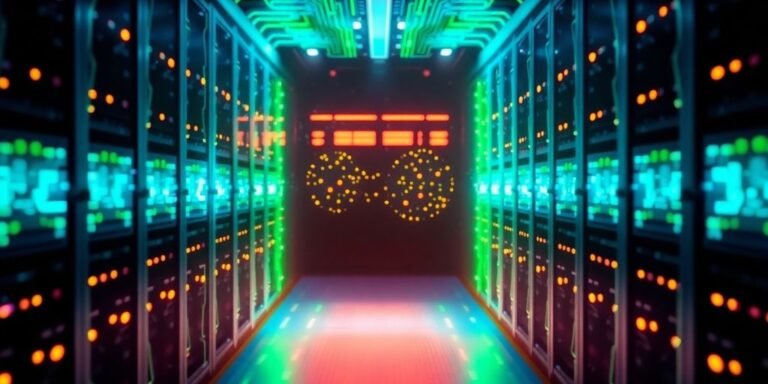Exploring the Benefits of the AP1000 SMR for Sustainable Energy Solutions
The AP1000 SMR is a big step forward for clean energy. It’s a small reactor that can make a lot of power. This new design helps solve some old problems with nuclear power, like how much it costs and how long it takes to build. We’ll look at how this SMR AP1000 technology works, why it’s good for the economy, and how it helps the environment. We’ll also talk about its safety features and where it might be used in the future.
Key Takeaways for AP1000 SMR
- The SMR AP1000 uses technology that’s already been tested and works.
- It costs less money upfront and can be built faster than bigger power plants.
- The SMR AP1000 has good safety systems that make it reliable.
- It helps cut down on bad stuff in the air, which is good for the planet.
- This SMR AP1000 can provide power in many different places, even far-off ones, and help businesses go green.
Understanding the AP1000 SMR Technology

Defining Small Modular Reactors
Small Modular Reactors (SMRs) are the new kids on the block in nuclear energy, and they’re generating a lot of buzz. Unlike traditional, large-scale nuclear plants, SMRs are designed to be smaller, more flexible, and potentially more economical. They typically generate less power, usually in the range of 20 to 300 MW. This makes them suitable for a wider range of applications, from powering small communities to supporting industrial processes. One of the biggest advantages of SMRs is their modular design. This means they can be manufactured in a factory and then transported to the site for installation, reducing construction time and costs. The AP300 SMR is a great example of this.
SMRs offer the promise of scalability and reduced upfront investment, making nuclear energy more accessible to a broader range of users.
Here’s a quick rundown of the key characteristics of SMRs:
- Lower power output compared to traditional reactors
- Modular design for factory production and easier transport
- Potential for incremental deployment and scalability
- Suitability for diverse applications and locations
Leveraging Proven AP1000 Technology
The SMR AP1000 isn’t starting from scratch; it’s building on a solid foundation. It’s based on the existing AP1000 reactor technology, which has already been deployed and operated in multiple locations around the world. This is a huge advantage because it means the SMR AP1000 benefits from years of experience and development. The AP1000 design has already received regulatory approval in several countries, including the U.S., the U.K., and China. This proven track record helps to streamline the regulatory process and reduces the risks associated with deploying a new technology. Using existing technology also means that the SMR AP1000 can leverage established supply chains and manufacturing processes, further reducing costs and deployment time.
Modular Design for Flexible Deployment
The modular design of the SMR AP1000 is a game-changer in terms of deployment flexibility. Because the reactors are built in factories, they can be easily transported and installed at various locations. This opens up a lot of possibilities for meeting diverse energy needs. For example, SMRs can be deployed in remote areas where it would be difficult or expensive to build a traditional nuclear plant.
They can also be used to provide power for industrial facilities or to support the integration of renewable energy sources. The modularity also allows for incremental deployment, meaning that utilities can start with a smaller initial investment and then add more modules as demand grows. This makes the SMR AP1000 a predictable investment for utilities and other stakeholders.
Here are some of the benefits of the modular design:
- Reduced construction time and costs
- Easier transport and installation
- Flexibility to deploy in diverse locations
- Potential for incremental deployment and scalability
Economic Advantages of the SMR AP1000
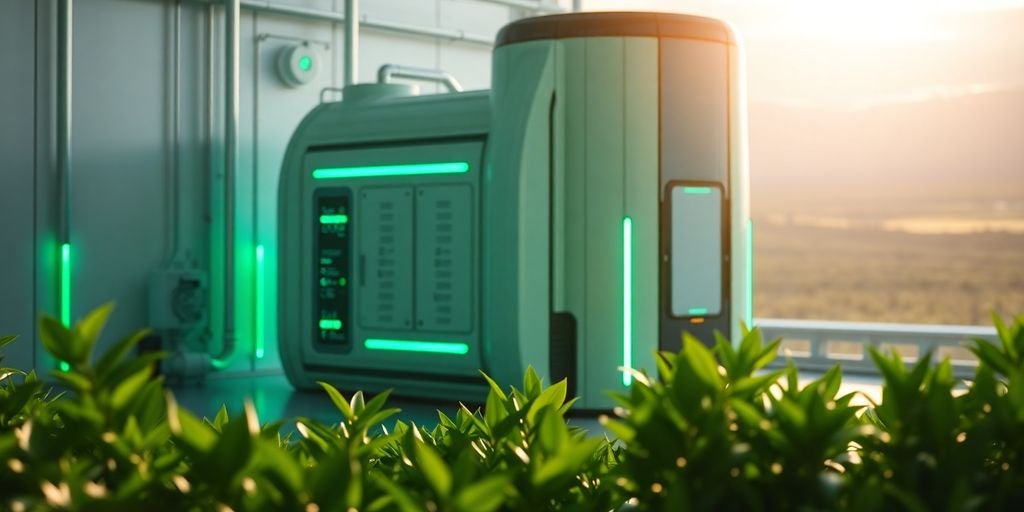
Predictable Investment and Cost Structure
One of the most appealing aspects of the SMR AP1000 is its predictable cost structure. Unlike some other SMR designs that rely on unproven technologies, the AP1000 is based on the established AP1000 technology. This means that the cost structure is derived from real-world experience, making it a more predictable investment for utilities and other stakeholders. This predictability helps in securing financing and managing project budgets effectively. Westinghouse is promoting its AP1000 reactor to Congress, emphasizing its immediate deployability for affordable, abundant energy and the creation of high-paying, skilled jobs.
Reduced Upfront Capital Investment
SMRs, in general, require less upfront capital compared to traditional large-scale nuclear plants. A 300 MW SMR facility will require much less up-front capital than a standard 1,000 MW nuclear plant will. This lower initial investment makes nuclear energy more accessible to a wider range of investors and utilities. Even if overnight costs for first-of-a-kind construction are high, a 100 MW SMR would still require significantly less capital than a larger plant. This reduced financial barrier can accelerate the deployment of nuclear energy solutions.
Rapid Deployment and Scalability
The modular design of the AP1000 SMR allows for rapid and incremental deployment. This means that utilities can start with a smaller initial investment and scale up as demand grows. This flexibility is particularly beneficial in regions where energy needs are rapidly changing. The modularity of SMRs also allows for factory production and easier transport, enabling incremental deployment and reducing the upfront capital investment compared to traditional nuclear plants. Here are some benefits of rapid deployment:
- Faster return on investment
- Ability to adapt to changing energy demands
- Reduced construction time
The ability to scale up gradually is a game-changer. It allows communities and industries to adopt nuclear power without the massive financial commitment required for traditional plants. This makes nuclear energy a more viable option for a broader range of applications.
Enhanced Safety Features of the SMR AP1000
Safety is obviously a huge deal when we’re talking about nuclear energy. The SMR AP1000 design really puts a focus on this, incorporating features that meet strict rules and boost how safe the reactor is overall. It’s all about making sure things are as secure as possible.
Adherence to Stringent Regulatory Standards
The SMR AP1000 is designed to meet some seriously tough regulatory standards. This isn’t just about ticking boxes; it’s about making sure every aspect of the reactor’s design and operation is as safe as it can be. The goal is to show that this technology is reliable and safe for everyone. The GDA process is a key part of this, ensuring that the design meets all necessary requirements.
Passive Safety Systems for Increased Reliability
One of the coolest things about the SMR AP1000 is its use of passive safety systems. These systems can operate without needing external power or human intervention. Basically, if something goes wrong, these systems kick in automatically to keep things safe. This significantly improves the reactor’s safety profile, making it more reliable in unexpected situations.
Bolstering Public Confidence in Nuclear Power
Ultimately, all these safety features are about building trust. Nuclear power has had its share of bad press, and it’s important to show that new technologies like the SMR AP1000 are incredibly safe. By meeting high standards and using advanced safety systems, the goal is to make people feel good about nuclear energy as a clean and reliable source of power.
The SMR AP1000’s safety features aren’t just add-ons; they’re built into the core design. This means that safety is considered at every stage, from planning to operation. It’s a comprehensive approach that aims to minimize risks and ensure the reactor operates safely under all conditions.
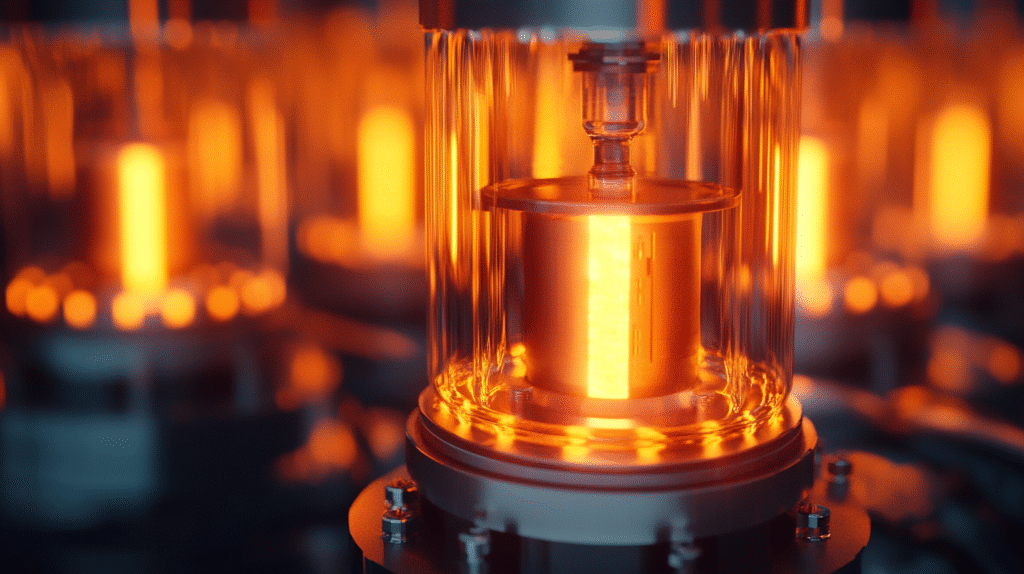
Environmental Benefits of the SMR AP1000
Contributing to Reduced Greenhouse Gas Emissions
SMRs, like the AP1000, are a big step towards cleaner energy. They don’t produce greenhouse gases while operating, which is a major plus. The advantages of AP1000 small modular reactor in clean energy are clear when you compare them to fossil fuels. Think about it: less pollution, a healthier planet. It’s a win-win.
A Cleaner Alternative to Fossil Fuels
We all know fossil fuels are a problem. They pollute our air and contribute to climate change. The AP1000 SMR offers a real solution. It’s a cleaner way to generate electricity, helping us move away from dirty energy sources. The water supply and management is a key aspect of sustainable micro-infrastructure, and clean energy sources like the AP1000 SMR are essential for these systems.
Viable Solution for Low-Carbon Energy Generation
Looking for ways to reduce our carbon footprint? The AP1000 SMR could be the answer. The benefits of the Westinghouse AP1000 reactor for low-carbon energy can help us meet our energy needs without harming the environment. Beyond just reducing emissions, it’s about creating a sustainable future. Here are some key points:
- SMRs produce zero greenhouse gases during operation.
- They offer a viable solution for low-carbon energy generation.
- They can be integrated with renewable energy sources for a more balanced energy mix.
SMRs are a powerful energy source that generate no carbon emissions from operations; they are energy dense; they can be constructed flexibly; and—like wind and solar—costs could decline significantly as they gain scale.
Market Potential and Future Developments for SMR AP1000
Global Market Growth for Small Modular Reactors
The market for small modular reactors (SMRs) is poised for substantial growth. There’s a lot of buzz around SMRs, and new companies are popping up all over. Investment is pouring into the sector. The modular design allows for factory production and easier transport, enabling incremental deployment and reducing the upfront capital investment compared to traditional nuclear plants. The Poland AP1000 project is a great example of this.
Renewed Focus on Nuclear Energy
The approval of designs like the AP1000 SMR highlights a renewed focus on nuclear energy as a key part of the global energy landscape. This is driven by the need for reliable, low-carbon energy sources. Unlike many other SMRs that rely on untested technologies, the AP1000 utilizes proven engineering, components, and supply chains. This reduces uncertainties associated with new technologies and enhances the confidence of stakeholders.
Expanding Energy Solutions for Diverse Needs
SMRs, including the AP1000, offer a cleaner alternative to fossil fuels, contributing to reduced greenhouse gas emissions. As the world grapples with climate change and the need for sustainable energy sources, SMRs provide a viable solution for low-carbon energy generation. The role of AP1000 SMR technology in future energy systems is becoming increasingly important. They can:
- Meet energy needs in remote locations.
- Support industrial decarbonization.
- Power data centers and emerging industries.
SMRs have plenty of potential advantages—site flexibility, size flexibility, modularity, possible new markets—and of course, like big reactors, they offer reliable baseload energy 24/7. But most important of all, SMRs could generate clean reliable power much more cheaply than large reactors if major components or the entire reactor can be manufactured in a factory, not on-site, which could open the door to economies of scale and declining costs. That promise is driving interest in SMRs.
Strategic Deployment of the SMR AP1000
Meeting Energy Needs in Remote Locations
SMRs, like the AP1000, are particularly well-suited for meeting energy demands in remote areas. Traditional power plants often face logistical challenges and high costs when serving communities far from existing infrastructure. SMRs offer a solution by providing a compact, reliable, and independent power source. This is especially beneficial for areas where grid extension is impractical or cost-prohibitive.
- Reduced transmission losses due to proximity to the load.
- Enhanced energy security for isolated communities.
- Support for local economic development through reliable power.
Supporting Industrial Decarbonization
Industrial processes are significant contributors to greenhouse gas emissions. The AP1000 SMR can play a vital role in decarbonizing these sectors by providing a clean and consistent energy supply. Industries that rely heavily on fossil fuels, such as manufacturing, chemical production, and resource extraction, can transition to nuclear power to reduce their carbon footprint. The 1 MWh battery storage systems can also be integrated to ensure a stable power supply.
SMRs offer a pathway for industries to meet increasingly stringent environmental regulations and sustainability goals. By adopting nuclear energy, companies can demonstrate a commitment to environmental stewardship and gain a competitive edge in a market that increasingly values sustainable practices.
Powering Data Centers and Emerging Industries
The digital age has brought about a surge in energy consumption, particularly from data centers. These facilities require massive amounts of electricity to operate servers, cooling systems, and other equipment. SMRs offer a reliable and low-carbon solution for powering data centers, ensuring uninterrupted service while minimizing environmental impact. Furthermore, emerging industries like hydrogen production and advanced manufacturing can also benefit from the stable and clean energy provided by SMRs. The modular design allows for flexible deployment, catering to the specific energy needs of these industries.
- Reduced carbon footprint for data-intensive operations.
- Enhanced grid stability and reliability.
- Support for the growth of innovative technologies.
Regulatory Approval and Industry Collaboration for SMR AP1000
The Generic Design Assessment Process
Getting a new nuclear reactor design approved isn’t a walk in the park. It’s more like climbing a mountain in flip-flops. The Generic Design Assessment (GDA) is a big part of that process, especially in places like the UK. It’s where regulators really put the design through its paces before anyone even thinks about building it. This way, they can spot any potential problems early on. It’s a long process, often taking several years, but it’s there to make sure everything is safe and sound. The goal is to make sure the design approval is solid.
Collaboration with Regulatory Bodies
Working with regulatory bodies like the Nuclear Regulatory Commission (NRC) isn’t always easy. They’re known for being super careful, and honestly, that’s a good thing when you’re dealing with nuclear power. But it also means things can move slowly. The NRC is working on ways to speed things up, like with the new Part 53 pathway for reactor certification. But even with these changes, it’s still a complex process. It’s all about finding the right balance between making sure everything is safe and actually getting these reactors built.
Streamlining Delivery Risks for Utilities
Utilities thinking about using SMR AP1000s face a bunch of risks, and not just the financial ones. There’s also the risk of delays, cost overruns, and just plain old uncertainty. Streamlining the delivery process is key to making these projects more attractive. This means:
- Getting the regulatory stuff sorted out early.
- Making sure the supply chain is solid.
- Having a clear plan for construction and operation.
By working closely with regulators and suppliers, utilities can reduce these risks and make SMR projects a more viable option. It’s about creating a predictable and reliable process from start to finish.
Ultimately, the success of the SMR AP1000 depends on getting all these pieces to fit together. It’s a challenge, but it’s one that the industry is working hard to overcome. The regulatory standards are high for a reason.
Conclusion
So, what’s the big takeaway here? The AP1000 SMR really looks like a game-changer for how we get our energy. It’s got a lot going for it: it’s based on stuff that already works, it can be put into action pretty fast, and it’s good for the planet because it doesn’t make a lot of bad stuff. Plus, the safety features are a big deal, making people feel better about nuclear power. As we keep looking for ways to power our world that are both reliable and clean, the AP1000 SMR seems like a strong contender. It could really help us move towards a future with more sustainable energy.
Frequently Asked Questions
What exactly is an SMR AP1000?
Small Modular Reactors (SMRs) are smaller, more flexible nuclear power plants. Unlike big traditional nuclear plants, SMRs are built in factories and can be put together on site. Think of them like building blocks for energy. The AP1000 SMR is a type of SMR that uses technology from the proven AP1000 reactor, but in a smaller package.
How safe is the AP1000 SMR?
The AP1000 SMR is designed to be very safe. It uses special systems that work on their own, without needing people or outside power, to shut down safely in an emergency. This makes them super reliable and helps people feel more comfortable with nuclear power.
Does the AP1000 SMR help the environment?
Yes! Nuclear power, especially from SMRs like the AP1000, doesn’t create greenhouse gases that cause climate change. It’s a clean way to make electricity, helping us move away from burning fossil fuels and making our air cleaner.
Are AP1000 SMRs cheaper to build?
Because they’re built in pieces and can be put together faster, AP1000 SMRs cost less to start up than huge nuclear plants. You can also add more units as needed, which makes them a smart choice for growing energy needs without a giant initial investment.
Where can AP1000 SMRs be used?
The AP1000 SMR is great for places that need reliable power but might not have a strong electrical grid or are far away. It can also help big factories and data centers get the clean energy they need to run their operations.
What’s the future for AP1000 SMRs?
Lots of countries are looking at SMRs because they offer a flexible and clean way to produce electricity. The AP1000 SMR, with its proven technology, is expected to be a big player in the global energy market as more places look for sustainable power options.

